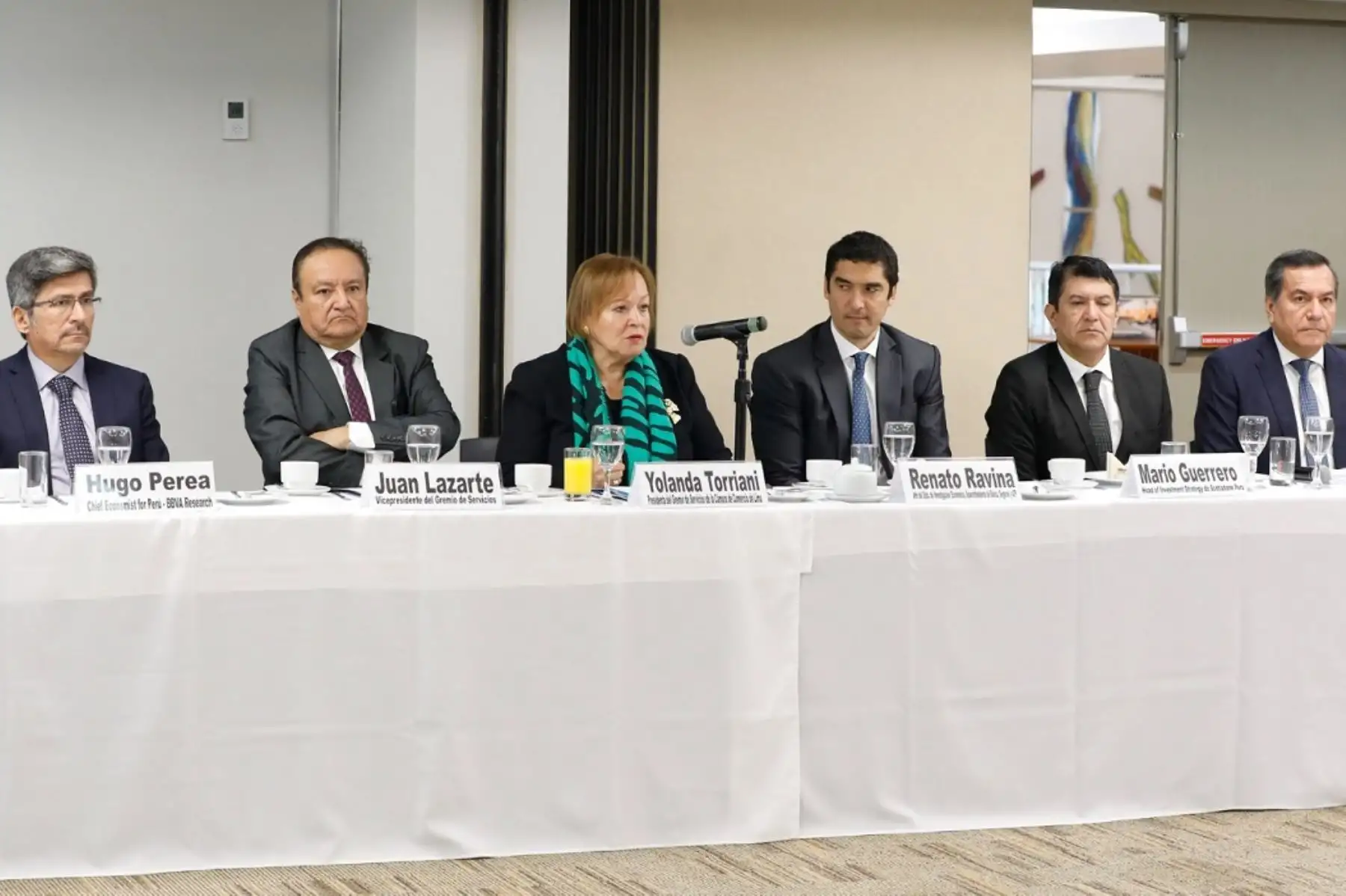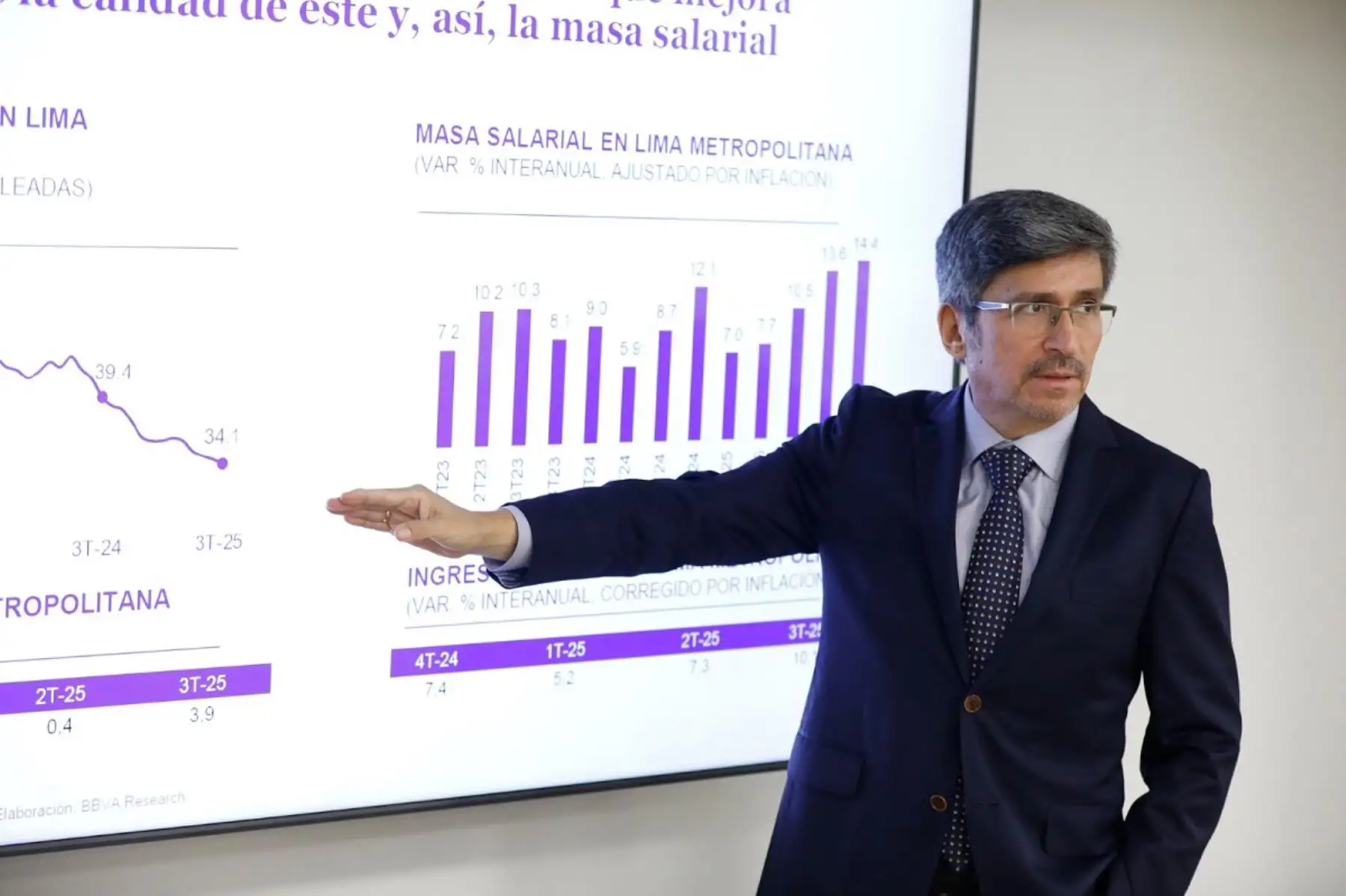The Peruvian financial system is one of the strongest in the region, highlighting its resilience and capacity to continue driving economic growth, even considering a pre-election context like that of 2026, the Services Association of the Lima Chamber of Commerce (CCL) emphasized.
This was stated during the business breakfast "Perspectives of the Peruvian Financial System: Risks and Opportunities towards 2026," which brought together financial sector authorities and representatives of the national business community.
The president of the CCL Services Association, Yolanda Torriani, emphasized that 2026 will be a decisive year for Peru's economic growth, making it essential to evaluate the performance of the financial system in the current context.

In turn, Juan Lazarte, vice president of the Services Association, emphasized that Peru maintains a robust financial system and that, unlike in previous decades, the country has not faced significant crises, reflecting its stability and adaptability.
However, he warned of the risks of interference by some political actors in the banking system, proposing the imposition of fees, which could affect economic dynamism.
He also highlighted the need to improve access to formal financing for micro and small enterprises (MSEs), with more financial products that allow them to avoid informal or "drop-by-drop" credit.
Financial resilience
For his part, Renato Ravina, head of the Economic Research Department of the Superintendency of Banking, Insurance, and Pension Funds (SBS), emphasized that the Peruvian financial system remains resilient and solid, despite internal and external uncertainty.
He noted that the results of the stress tests conducted by the SBS confirm that the financial system remains solid in terms of capital and liquidity, sufficient to withstand severe scenarios, thus ensuring the protection of public savings and access to credit for businesses and families.
Solid fundamentals
For his part, Hugo Perea, chief economist for Peru at BBVA Research, emphasized that the peruvian economy is maintaining good performance, close to its potential level, and maintains solid macroeconomic fundamentals, which will allow it to better face external challenges.
According to his projections, the country is expected to grow 3.1% in 2025 and 2026, in a scenario that includes cautious spending due to the electoral process, a gradual improvement in investment, and a temporary boost to consumption due to pension fund withdrawals.
However, a slowdown in growth (2.5%) is anticipated in the medium term (2027-2030) due to institutional deterioration, increasing insecurity, and the loss of fiscal strength.
"Despite these risks, Peru maintains significant opportunities to increase its productivity and achieve more sustainable development," he emphasized.

Better financial conditions
Meanwhile, Mario Guerrero, head of investment strategy at Scotiabank Peru, noted that the Peru's financial conditions continue to recover, especially in terms of access to credit for small and medium-sized businesses, which are expected to enter positive territory in 2026, accompanied by a gradual reduction in delinquency rates.
He also noted that interest rates have shown a downward trend since the peak recorded after the pandemic, which favors investment and business refinancing.
Likewise, the digitalization of the Peruvian financial system is accelerating with the increase in transactions with electronic wallets and digital payments, which boosts banking efficiency, security, and competitiveness.
For his part, Óscar Chávez, head of the Institute of Economics and Business Development (IEDEP) of the CCL, highlighted that the trade sector's GDP has accumulated 54 consecutive months of growth, albeit at an annual rate of 3%.
"Despite the boost that could be generated by the disbursements of the CTS (Compensation for Time Worked) and the AFP funds (Private Pension Fund), trade has not managed to exceed 4% growth in the last four years," he commented, specifying that the country needs to grow above 3% on a sustained basis to accelerate recovery and generate more formal employment.
In light of this, Chávez emphasized that the government must strengthen the role of the National Council for Competitiveness and Formalization in order to increase the economy's potential growth and consolidate more dynamic progress in the productive sectors.
(END) NDP / MDV
More in Andina:
Published: 10/28/2025